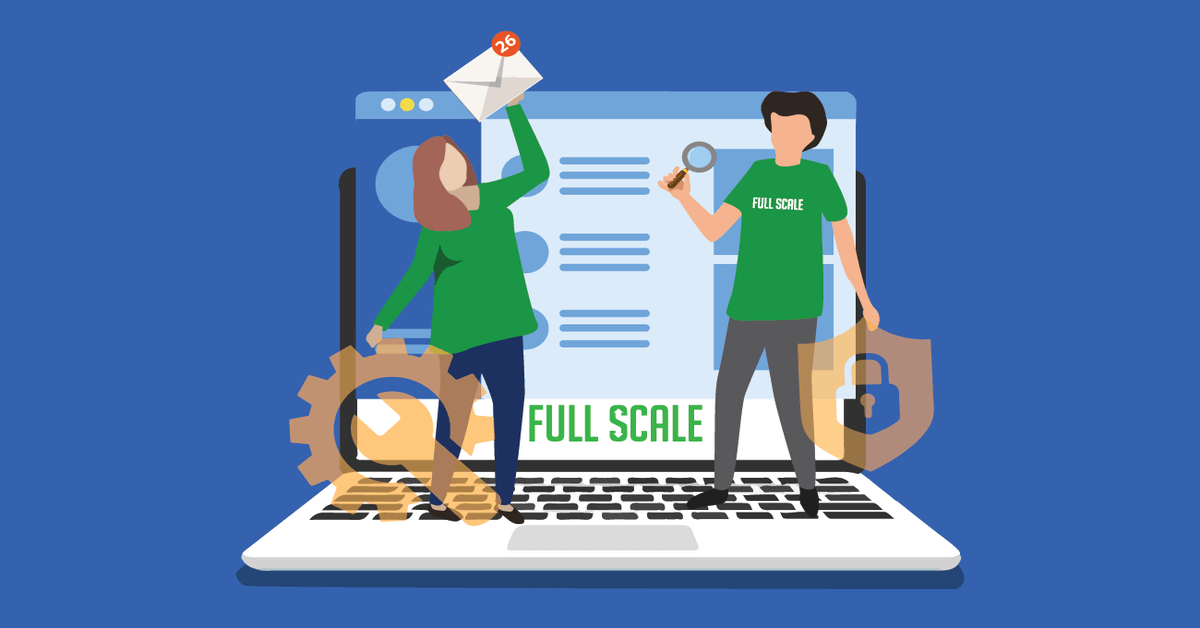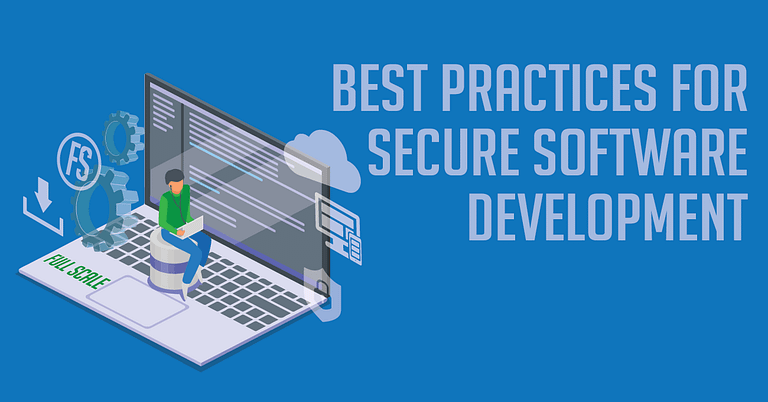Last Updated on 2025-01-13
Secure software development is the answer to growing cyber threats to businesses. Let’s discuss the nitty-gritty of secure software development and its best practices.
Software applications have become crucial for modern businesses. They help drive innovation and streamline operations for companies.
However, the increased reliance on software has also exposed companies to security issues. That is why a structured approach to creating a robust and secure software solution is a must. This is where secure software development comes into play.
This article will explore the critical aspects of a secure software development lifecycle (SDLC). We’ll also answer the following questions:
- What is secure software development?
- What are the best practices for secure software development?
- What risk factors should you consider?
- Why do businesses need to implement it?
Secure Software Development Lifecycle: The Basics
Secure software development is a structured and systematic approach to creating software applications, primarily focusing on security. It involves integrating security practices and measures from initial design to deployment, maintenance, and beyond.
The process aims to identify and address your software’s vulnerabilities and weaknesses. By doing so, you can build applications resilient to cyber threats. You can also protect sensitive data and resources from unauthorized access and other security incidents.
Understanding Secure Software Development Policy
A secure software development policy is a document that outlines the security principles, guidelines, and development procedures.
It provides a framework for developers to adhere to secure coding practices, data protection measures, and risk management strategies. This policy is a proactive measure to ensure that security is an inherent part of your software development journey.
15 Best Practices for A Secure Software Development Process
Cyber threats are becoming more sophisticated nowadays. To protect digital assets and maintain the trust of your customers, you must adopt a security-first approach to software development. Here are 15 best practices for secure software development to fortify your applications.
Practice #1: Adopt a security-first mindset throughout the organization
Security should be a core value that permeates all levels of your company. From developers to management, everyone should prioritize security and integrate it into their decision-making processes. This mindset ensures that security is not an afterthought but an integral part of the system development lifecycle.
Practice #2: Collaborate with security experts during project planning
Incorporate security experts early in the project planning phase. Their insights can help you identify potential security risks and recommend appropriate safeguards. By involving them from the start, you can address security concerns proactively. Additionally, their insights can help you avoid costly fixes at later stages.
Practice #3: Regularly update and patch software components
Outdated software components may contain known vulnerabilities that hackers can exploit. Thus, you must regularly update and patch all software components. This includes third-party libraries to mitigate potential risks and keep your software secure.
Practice #4: Perform threat modeling to identify potential risks
Conducting threat modeling allows you to anticipate potential threats during the development process. As you identify weak points early on, you can effectively implement appropriate security measures to counteract possible attacks.
Practice #5: Conduct rigorous code reviews for security vulnerabilities
Thoroughly review code for security vulnerabilities. Adopt industry best practices to identify and eliminate potential weaknesses. This includes but is not limited to input validation errors, improper authentication, and insecure data storage.

Practice #6: Utilize strong authentication mechanisms and access controls
Implement robust authentication methods, such as multi-factor authentication, to ensure only authorized users can access your sensitive features or data. Employ strict access controls to limit user privileges. These security protocols minimize the potential impact of a security breach.
Practice #7: Encrypt sensitive data at rest and during transmission
Encrypting sensitive data provides an additional layer of protection against unauthorized access. Ensure to encrypt data at rest (when stored) and during network transmission to prevent breaches.
Practice #8: Implement proper error handling to prevent data leaks
Proper error handling is essential to prevent information leakage. Avoid exposing sensitive error messages revealing your system details to potential attackers. Instead, provide generalized error messages to your end users.
Practice #9: Educate your developers on secure coding practices and new threats
Regularly train your developers on secure coding practices and emerging security threats. They can write more secure code and stay vigilant against new attack vectors when they are up-to-date with the latest security practices.
Practice #10: Conduct regular security assessments and penetration tests
Regularly assess your software for security vulnerabilities through security assessments and penetration tests. These tests simulate real-world attacks to identify weaknesses. As a result, they provide insights into areas that need improvement.
Practice #11: Enforce the least privilege principle for user access
Adhere to the principle of least privilege. You should grant users only the minimum permissions necessary to perform their tasks. This minimizes the potential damage a compromised account can inflict on the system.
Practice #12: Develop and maintain an incident response plan
Create a comprehensive incident response plan. Outline the steps to be taken in the event of a security breach. The plan should also include roles, responsibilities, communication protocols, and recovery procedures.
Practice #13: Regularly monitor security logs for suspicious activities
Monitor security logs and audit trails regularly to detect unusual or suspicious activities. Early detection of security incidents can prevent further damage. Moreover, this helps you understand the nature of the attack.
Practice #14: Incorporate secure coding frameworks and libraries
Utilize reputable databases, frameworks, and libraries that have been proven to be secure. Using such tools can reduce the likelihood of introducing vulnerabilities into the codebase.
Practice #15: Securely configure servers and network devices
Configure servers, databases, and network devices with security in mind. Implement best practices for firewall rules, access controls, and encryption protocols.
7 Key Secure Software Development Risk Factors
Determining the risk factors and planning your cybersecurity measures helps you stay ahead of your competitors. Remember, prioritizing secure software development is no longer a choice. However, it is a strategic action for any business seeking success in the digital world. So here are seven risk factors you should think about.
- Inadequate threat modeling and risk assessment—Failure to identify potential security risks and threats during the early stages of development can lead to critical vulnerabilities being overlooked.
- Poorly defined security requirements—Ambiguous or incomplete security requirements may result in insufficient protection measures, making the application susceptible to attacks.
- Vulnerabilities in third-party libraries and components—Integrating vulnerable third-party code can introduce security weaknesses that can be exploited by malicious acts.
- Insufficient code review and testing—Lack of thorough code reviews and testing can leave hidden vulnerabilities undiscovered, paving the way for potential breaches.
- Insecure data storage and handling practices—Mishandling sensitive data, such as passwords or personal information, can lead to data leaks or unauthorized access.
- Lack of secure authentication and authorization mechanisms—Weak authentication and authorization processes can enable unauthorized access to sensitive functionalities.
- Neglecting security updates and patches—Failing to update software components regularly can leave known vulnerabilities unaddressed, creating opportunities for cyberattacks.
Secure Software Development Is Important for Your Business
Secure software development is critical to modern business operations. By incorporating security from the outset, you can safeguard sensitive data, intellectual property, and customer information from malicious threats.
Moreover, a secure software development process helps enhance customer trust and loyalty. How so?
Users are more likely to engage with your applications when they believe their data is well-protected. Additionally, implementing robust security measures ensures compliance with industry standards and regulations, mitigating potential legal and financial repercussions.
Let Full Scale Build A Secure Tech Product For You
Full Scale is an offshore software development company based in Kansas City, Missouri. Just last year, we got a spot at Inc. 5000 as one of the fastest-growing tech companies in the US. All thanks to our team of more than 300 skilled and experienced developers, testers, and leaders.
We can help you build a software development team quickly and affordably. Determine your needs in two minutes, and our platform will automatically match you with the right resources.
Work with us on a successful software development project now.

Matt Watson is a serial tech entrepreneur who has started four companies and had a nine-figure exit. He was the founder and CTO of VinSolutions, the #1 CRM software used in today’s automotive industry. He has over twenty years of experience working as a tech CTO and building cutting-edge SaaS solutions.
As the CEO of Full Scale, he has helped over 100 tech companies build their software services and development teams. Full Scale specializes in helping tech companies grow by augmenting their in-house teams with software development talent from the Philippines.
Matt hosts Startup Hustle, a top podcast about entrepreneurship with over 6 million downloads. He has a wealth of knowledge about startups and business from his personal experience and from interviewing hundreds of other entrepreneurs.





